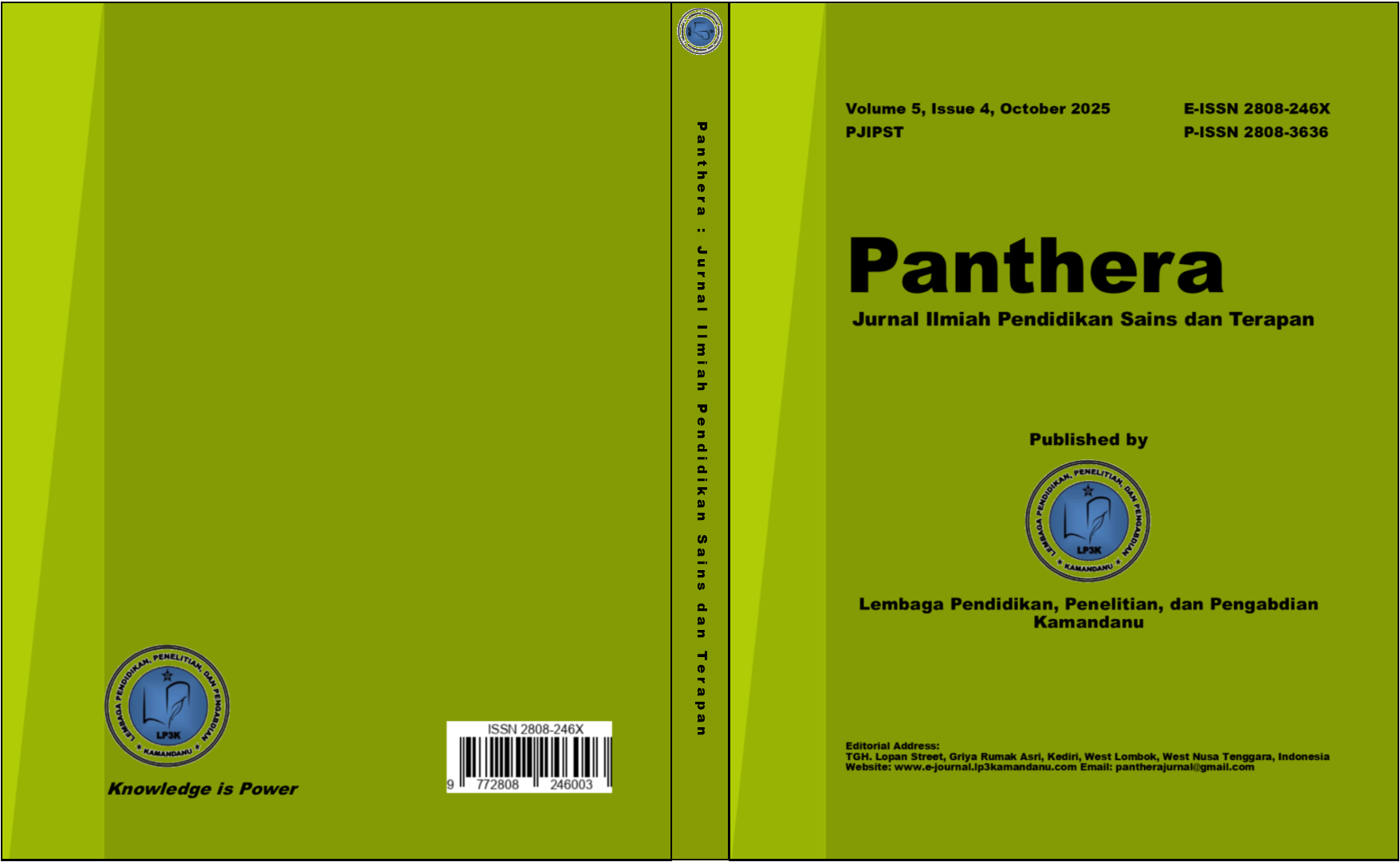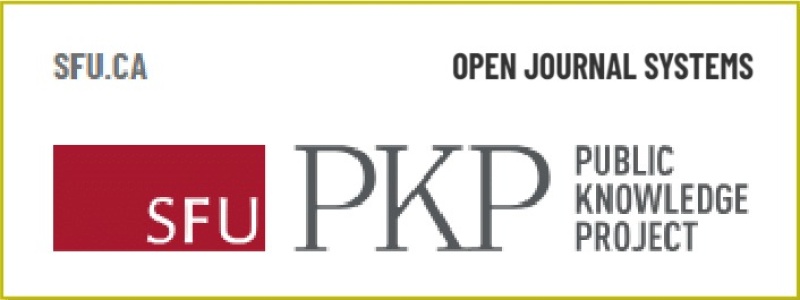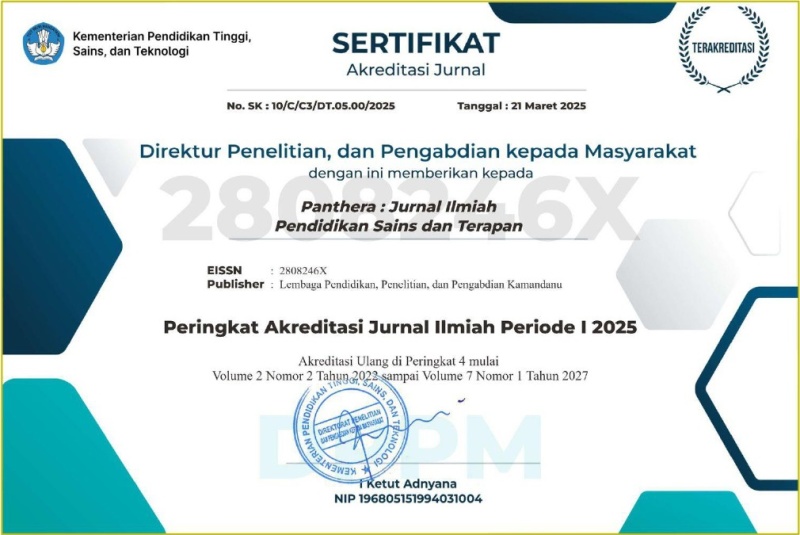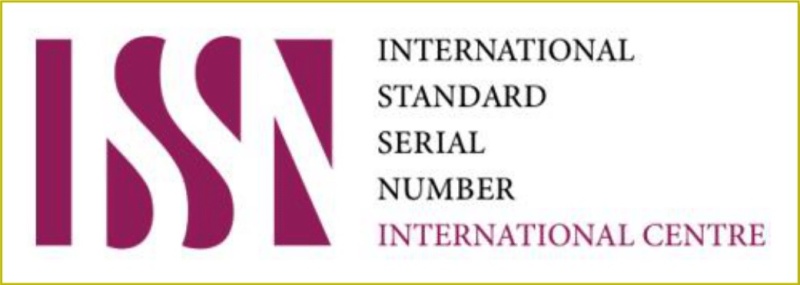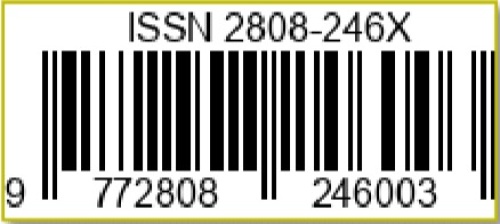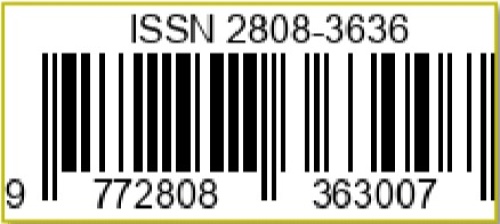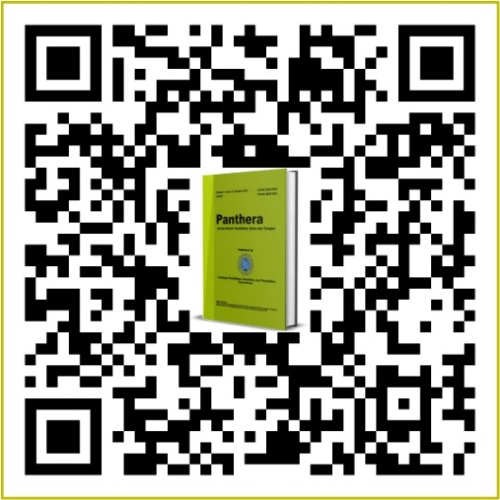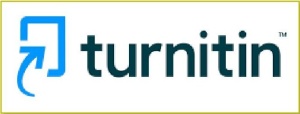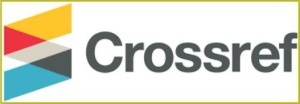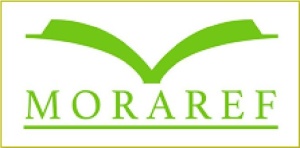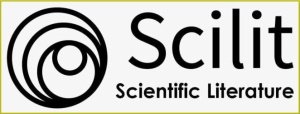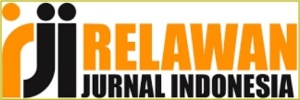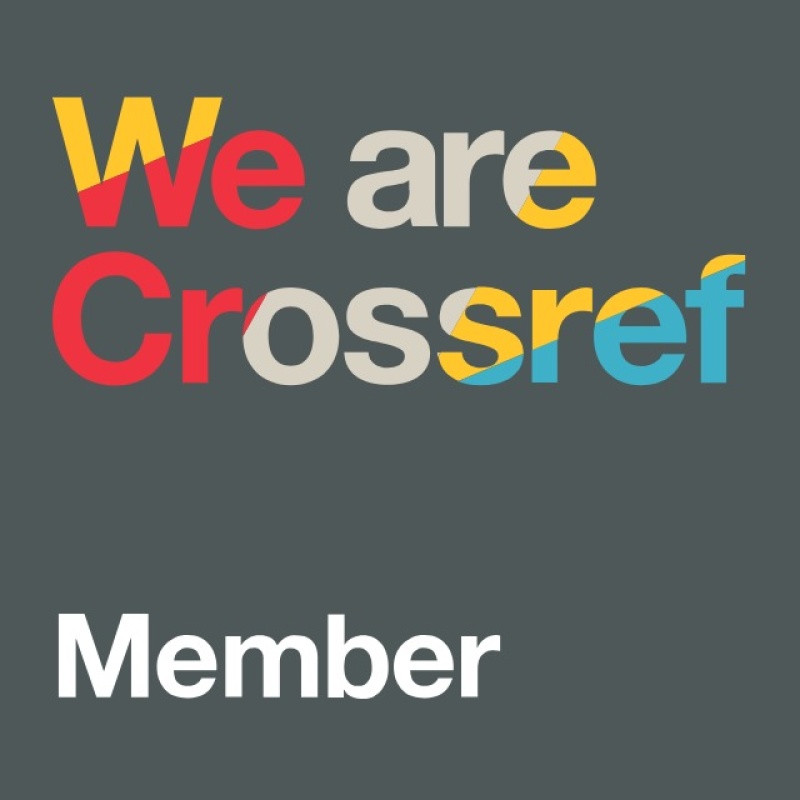Diterimanya Hasil Belajar Evaluasi Pembelajaran Kejuruan: Peran Mediasi Motivasi Belajar
DOI:
https://doi.org/10.36312/panthera.v5i4.698Keywords:
Evaluation of Vocational Learning, Learning Facilities, Learning Outcomes, Learning Environment, Learning MotivationAbstract
This study aims to determine the influence of learning facilities and learning environment on student learning outcomes in the Vocational Learning Evaluation course, as well as to determine the role of learning motivation mediation. This study uses a quantitative method with a survey approach. The research sample was taken using a purposive sampling technique totaling 69 students of the Automotive Engineering Education Study Program, Semarang State University (UNNES) class of 2022 who took the Vocational Learning Evaluation course. The research will be carried out in the fifth semester of 2024. Data processing is carried out using the SmartPLS 4 application. The research instrument is in the form of a questionnaire that has been validated by experts. This study tested direct and indirect (intervening) hypotheses, with independent variables, namely learning facilities (X1) and learning environment (X2), dependent variables of learning outcomes (Z1), and learning motivation (Y1) as intervening variables. Data analysis included convergent validity tests, discriminant validity, reliability estimation, R-Square values, F-Square, hypothesis tests, and Goodness of Fit (GoF). The results of the study show that the model used is reliable. The path coefficient between learning facilities and learning outcomes was 0.377, learning facilities to learning motivation was 0.317, learning environment to learning outcomes was 0.312, learning environment to learning motivation was 0.527, and learning motivation to learning outcomes was 0.282. The total indirect effects between learning facilities and learning outcomes were 0.089, while between learning environment and learning outcomes were 0.149. Positive values in each relationship indicate a positive influence between variables. The results of this study prove that learning motivation plays a significant role as a mediating variable in influencing student learning outcomes. These findings emphasize the importance of providing adequate learning facilities and a conducive learning environment to increase student motivation and learning outcomes in the Vocational Learning Evaluation course.
Downloads
References
Azma, H. (2019). Pengaruh Fasilitas Belajar, Minat Belajar, Lingkungan Belajar dan Motivasi Belajar terhadap Hasil Belajar Siswa pada Mata Pelajaran IPS SMK Kabupaten Tanah Datar: Kajian. Jurnal Ilmiah Universitas Batanghari Jambi, 19(2), 387-390. https://doi.org/10.33087/jiubj.v19i2.685
Batubara, H. (2020). Media Pembelajaran Efektif. Semarang: Fatawa Publishing.
Beldiq, E. A., Callula, B., Yusuf, N. A., & Zahra, A. R. A. (2024). Unlocking Organizational Potential: Assessing the Impact of Technology through SmartPLS in Advancing Management Excellence. APTISI Transactions on Management, 8(1), 40-48. https://doi.org/10.33050/atm.v8i1.2195
Cokro, S., & Iskandar, R. (2025). Pengembangan Media Pembelajaran Flipbook Pengelasan untuk Siswa SMK IPT Semarang. Panthera : Jurnal Ilmiah Pendidikan Sains dan Terapan, 5(3), 302-310. https://doi.org/10.36312/panthera.v5i3.423
Erlinawati, E., & Muslimah, M. (2021). Test Validity and Reliability in Learning Evaluation. Bulletin of Community Engagement, 1(1), 26-31. https://doi.org/10.51278/bce.v1i1.96
Fatah, A., Iskandar, R., & Naryanto, R. F. (2025). Pengaruh Model Pembelajaran terhadap Hasil Belajar Siswa SMK Otomotif: Meta Analisis. Panthera : Jurnal Ilmiah Pendidikan Sains dan Terapan, 5(3), 339-352. https://doi.org/10.36312/panthera.v5i3.431
Faza, M. I., Iskandar, R., & Naryanto, R. F. (2024). Innovative Gamification Strategies to Improve Student Learning Outcomes in Vocational High Schools. Educatio : Jurnal Pendidikan Indonesia, 10(1), 829-838. https://doi.org/10.29210/1202424639
Fuatzin, I., Iskandar, R., & Naryanto, R. F. (2025). Pengaruh Metode Pembelajaran terhadap Hasil Belajar Siswa SMK Otomotif di Indonesia: Studi Meta Analisis. Jurnal Pendidikan dan Teknologi Indonesia, 5(1), 53-64. https://doi.org/10.52436/1.jpti.560
Habsyi, F. Y. (2020). Pengaruh Fasilitas Belajar terhadap Prestasi Belajar Siswa SMA Nusantara Tauro. Jurnal Pendidikan dan Ekonomi, 2(1), 13-22. https://doi.org/10.5281/zenodo.4431102
Hamid, A. (2019). Penyusunan Tes Tertulis: Paper and Pencil Test. Ponorogo: Uwais Inspirasi Indonesia.
Hamid, R. S., & Anwar, S. M. (2019). Structural Equation Modeling (SEM) Berbasis Varian: Konsep Dasar dan Aplikasi dengan Program SmartPLS 3.2.8 dalam Riset Bisnis. Jakarta: PT. Inkubator Penulis Indonesia.
Hanif, D. R. A. (2023). Efektivitas Posting Video “Gerakan Cuci Tangan yang Benar” terhadap Perubahan Perilaku Kesehatan Mencuci Tangan Followers Akun Tiktok @alodokter.id dalam Pencegahan Covid-19. Skripsi. Universitas Pembangunan Nasional Veteran Jakarta.
Harahap, N. F., Anjani, D., & Sabrina, N. (2021). Analisis Artikel Metode Motivasi dan Fungsi Motivasi Belajar Siswa. Indonesian Journal of Intellectual Publication, 1(3), 198-203. https://doi.org/10.51577/ijipublication.v1i3.121
Harefa, D., Sarumaha, M., Telaumbanua, K., Telaumbanua, T., Laia, B., & Hulu, F. (2023). Relationship Student Learning Interest to the Learning Outcomes of Natural Sciences. International Journal of Educational Research & Social Sciences, 4(2), 240-246. https://doi.org/10.51601/ijersc.v4i2.614
Haryono, S. (2016). Metode SEM untuk Penelitian Manajemen dengan AMOS LISREL PLS. Bekasi: PT. Intermedia Personalia Utama.
Hermawan, Y., Suherti, H., & Gumilar, R. (2020). Pengaruh Lingkungan Belajar (Lingkungan Keluarga, Lingkungan Kampus, Lingkungan Masyarakat) terhadap Prestasi Belajar Mahasiswa. Jurnal Edukasi (Ekonomi, Pendidikan dan Akuntansi), 8(1), 51-58. https://doi.org/10.25157/je.v8i1.3317
Hidayat, H., Asri, S., Iskandar, R., Bahatmaka, A., Huda, K., Leksono, P. B., Winarko, C. A., & Arrijah, H. K. (2023). Peningkatan Keterampilan Guru Produktif SMK dalam Pendidikan 4.0 melalui Pelatihan Pembuatan dan Publikasi Video Pembelajaran di Youtube. Selaparang : Jurnal Pengabdian Masyarakat Berkemajuan, 7(4), 2275-2281.
Hidayat, H., Asri, S., Setiyawan, A., Huda, K., Roziqin, A., & Iskandar, R. (2024). The Implementation of Plasticine Wax Media to Increase the Right-Aligned Lathe Chisel Geometry Understanding for the Students of Automotive Engineering Education During Covid-19 Pandemics. In 5th Vocational Education International Conference (pp. 1231-1236). Dordrecht, Netherlands: Atlantis Press.
Hilkenmeier, F., Bohndick, C., Bohndick, T., & Hilkenmeier, J. (2020). Assessing Distinctiveness in Multidimensional Instruments without Access to Raw Data - A Manifest Fornell-Larcker Criterion. Frontiers in Psychology, 11(1), 1-9. https://doi.org/10.3389/fpsyg.2020.00223
Huda, K., Iskandar, R., Darsono, F. B., Hidayat, H., & Ahda, Z. Z. (2024). Pengembangan Buku Ajar pada Mata Kuliah Praktikum Pemesinan Berbasis Project Based Learning. Jurnal Ilmiah Wahana Pendidikan, 10(4), 965-970. https://doi.org/10.5281/zenodo.10886479
Irawati, I., Ilhamdi, M. L., & Nasruddin, N. (2021). Pengaruh Gaya Belajar terhadap Hasil Belajar IPA. Jurnal Pijar MIPA, 16(1), 44-48. https://doi.org/10.29303/jpm.v16i1.2202
Iskandar, R. (2019). Pedoman Penilaian Hasil Belajar Peserta Didik SMK Kompetensi Keahlian Teknik Kendaraan Ringan pada Mata Pelajaran Pemeliharaan Sasis dan Pemindah Tenaga Kendaraan Ringan. Sukabumi: CV. Jejak (Jejak Publisher).
Iskandar, R., Arifin, Z., & Sudira, P. (2020). Problems of Automotive Vocational Teaching-Learning Process for Students with Mild Intellectual Disability (MID). International Journal of Advanced Science and Technology, 29(7), 417-424.
Iskandar, R., Rusiyanto, R., Setiadi, R., Huda, K., & Hidayat, H. (2023). Pengembangan Buku Ajar Interaktif Berbasis QR Code dan Short Link pada Mata Kuliah Praktik Kelistrikan Bodi. Jurnal Ilmiah Wahana Pendidikan, 9(10), 467-477. https://doi.org/10.5281/zenodo.7988214
Isroani, F., Jaafar, N., & Muflihaini, M. (2022). Effectiveness of E-Learning Learning to Improve Student Learning Outcomes at Madrasah Aliyah. International Journal of Science Education and Cultural Studies, 1(1), 42-51. https://doi.org/10.58291/ijsecs.v1i1.26
Jainiyah, J., Fahrudin, F., Ismiasih, I., & Ulfah, M. (2023). Peranan Guru dalam Meningkatkan Motivasi Belajar Siswa. Jurnal Multidisiplin Indonesia, 2(6), 1304-1309. https://doi.org/10.58344/jmi.v2i6.284
Jumrawarsi, J., & Suhaili, N. (2021). Peran Seorang Guru dalam Menciptakan Lingkungan Belajar yang Kondusif. Ensiklopedia Education Review, 2(3), 50-54. https://doi.org/10.33559/eer.v2i3.628
Khoiruddin, M. A., & Iskandar, R. (2024). Pengembangan Gamifikasi untuk Meningkatkan Motivasi Belajar dan Hasil Belajar Materi Sistem AC. Jurnal Pendidikan Vokasi Otomotif, 7(1), 194-214. https://doi.org/10.21831/jpvo.v7i1.78689
Komara, S., & Iskandar, R. (2025). Pendidikan Kejuruan: Kajian Teori, Kebijakan, dan Praktik Pembelajaran. Panthera : Jurnal Ilmiah Pendidikan Sains dan Terapan, 5(3), 274-290. https://doi.org/10.36312/panthera.v5i3.421
Kurniawan, A., Febrianti, A. N., Hardianti, T., Ichsan, I., Desy, D., Risan, R., Sari, D. M. M., Sitopu, J. W., Dewi, R. S., Sianipar, D., Fitriyah, L. A., Zulkarnaini, Z., Jalal, N. M., Hasriani, H., & Hasyim, F. (2022). Evaluasi Pembelajaran. Padang: PT. Global Eksekutif Teknologi.
Liana, L. (2009). Penggunaan MRA dengan SPSS untuk Menguji Pengaruh Variabel Moderating terhadap Hubungan antara Variabel Independen dan Variabel Dependen. Dinamik, 14(2), 90-97. https://doi.org/10.35315/dinamik.v14i2.95
Malik, M. B., Iskandar, R., & Naryanto, R. F. (2024). Development of Android-Based Mobile Learning Media to Increase Learning Results in Vocational High Schools. Journal of Research in Instructional, 4(2), 425-438. https://doi.org/10.30862/jri.v4i2.462
Maulana, R., Iskandar, R., & Naryanto, R. F. (2025). Pengembangan E-Modul Interaktif Sistem Penerangan Berbasis Pembelajaran Berdiferensiasi. Panthera : Jurnal Ilmiah Pendidikan Sains dan Terapan, 5(3), 219-231. https://doi.org/10.36312/panthera.v5i3.406
Mulia, E., Zakir, S., Rinjani, C., & Annisa, S. (2022). Kajian Konseptual Hasil Belajar Siswa dalam Berbagai Aspek dan Faktor yang Mempengaruhinya. Dirasat : Jurnal Manajemen dan Pendidikan Islam, 7(2), 137-156. https://doi.org/10.26594/dirasat.v7i2.2648
Musyono, A. D. N. I., Hadik, M., Roziqin, A., Rohman, S., Septiyanto, A., & Iskandar, R. (2024). Development of a Flipbook-Based Inventor Drawing Teaching Module to Improve Learning Outcomes in the Manufacturing Technical Drawing Subject. In 6th Vocational Education International Conference (pp. 119-126). Dordrecht, Netherlands: Atlantis Press.
Nasution, M. I., Fahmi, M., Jufrizen, J., Muslih, M., & Prayogi, M. A. (2020). The Quality of Small and Medium Enterprises Performance Using the Structural Equation Model-Part Least Square (SEM-PLS). Journal of Physics : Conference Series, 1477(5), 1-7. https://doi.org/10.1088/1742-6596/1477/5/052052
Prasetyo, A., Iskandar, R., & Naryanto, R. F. (2025). Korelasi Kurikulum terhadap Hasil Belajar Siswa SMK di Indonesia: Studi Meta Analisis. Panthera : Jurnal Ilmiah Pendidikan Sains dan Terapan, 5(3), 311-327. https://doi.org/10.36312/panthera.v5i3.424
Purba, L. S. L. (2020). The Effectiveness of the Quizizz Interactive Quiz Media as an Online Learning Evaluation of Physics Chemistry 1 to Improve Student Learning Outcomes. Journal of Physics: Conference Series, 1567(2), 1-4. https://doi.org/10.1088/1742-6596/1567/2/022039
Purnamasari, M. I. (2023). Analisis Validitas Konstruk, Konvergen, dan Diskriminan dari Instrument Well-Being. Jurnal Penelitian Pendidikan, 15(1), 48-55. https://doi.org/10.21137/jpp.2023.15.1.6
Putra, M. (2023). Utilization of Quizizz Platform in the Learning Evaluation Process. Jurnal Kependidikan Media, 12(2), 77-84. https://doi.org/10.26618/jkm.v12i2.11932
Raharjo, N. G., Iskandar, R., & Naryanto, R. F. (2025). Pengembangan Media Pembelajaran Sistem Penerangan Sepeda Motor Berbasis Android untuk Meningkatkan Hasil Belajar Siswa Kelas XI di SMK Negeri 3 Kabupaten Tangerang. Panthera : Jurnal Ilmiah Pendidikan Sains dan Terapan, 5(3), 232-249. https://doi.org/10.36312/panthera.v5i3.410
Ramadhani, R. K., Iskandar, R., & Naryanto, R. F. (2025). Pengaruh Strategi Belajar terhadap Hasil Belajar Siswa SMK di Indonesia: Studi Meta Analisis. Panthera : Jurnal Ilmiah Pendidikan Sains dan Terapan, 5(3), 386-404. https://doi.org/10.36312/panthera.v5i3.458
Ravinder, E. B., & Saraswathi, A. B. (2020). Literature Review of Cronbach Alpha Coefficient (α) and McDonald’s Omega Coefficient (Ω). European Journal of Molecular & Clinical Medicine, 7(6), 2943-2949. https://doi.org/10.13140/RG.2.2.35489.53603
Savitri, D. A. M., Kurniasari, D., & Mbiliyora, A. (2021). Pengaruh Profitabilitas dan Ukuran Perusahaan terhadap Nilai Perusahaan dengan Struktur Modal sebagai Variabel Intervening (Studi pada Perusahaan Manufaktur yang terdaftar di Bursa Efek Indonesia Tahun 2017-2019). Jurnal Akuntansi dan Pajak, 21(2), 500-507. https://doi.org/10.29040/jap.v21i02.1825
Setiyawan, A., Sunyoto, S., Septiyanto, A., Budiman, F. A., Kriswanto, K., Bahatmaka, A., Sudiyono, S., Fajar, D., Fitriyana, F., Iskandar, R., Towip, T., Prasetya, T. A., Citra, L., Manggalasari, M., Achmadi, T. A., Hidayat, H., & Pratiwi, I. (2024). Modeling Measuring Instrument Learning Media (MILM) in Block System Practicum for Engineering Education Students. In 5th Vocational Education International Conference (pp. 1153-1158). Dordrecht, Netherlands: Atlantis Press.
Somayana, W. (2020). Peningkatan Hasil Belajar Siswa melalui Metode PAKEM. Jurnal Pendidikan Indonesia, 1(3), 283-294. https://doi.org/10.59141/japendi.v1i03.33
Sugiyono, S. (2020). Metode Penelitian Kuantitatif, Kualitatif dan R&D. Bandung: CV. Alfabeta.
Sulistyowati, E. D., Hariyati, N., & Khamidi, A. (2024). Hubungan Lingkungan Belajar dan Motivasi Belajar terhadap Hasil Belajar. Journal of Education Research, 5(3), 2506-2514. https://doi.org/10.37985/jer.v5i3.1051
UNNES. (2024). Panduan Akademik Universitas Negeri Semarang Tahun 2024. Semarang: Universitas Negeri Semarang.
Utami, D. S., Putri, S. A., Suriansyah, A., & Cinantya, C. (2024). Pentingnya Motivasi dalam Meningkatkan Hasil Belajar Peserta Didik Sekolah Dasar. Maras : Jurnal Penelitian Multidisiplin, 2(4), 2071-2082. https://doi.org/10.60126/maras.v2i4.557
Wijaya, H., Tari, E., Sumule, L., Weismann, I. T. J., & Supartini, T. (2021). Online Learning Evaluation in Higher Education: Study Survey Method. Journal of Education Technology, 5(3), 401-408. https://doi.org/10.23887/jet.v5i3.35466
Yandi, A., Putri, A. N. K., & Putri, Y. S. K. (2023). Faktor-faktor yang Mempengarui Hasil Belajar Peserta Didik (Literature Review). Jurnal Pendidikan Siber Nusantara, 1(1), 13-24. https://doi.org/10.38035/jpsn.v1i1.14
Yuliansih, E., Arafat, Y., & Wahidy, A. (2021). The Influence of Learning Media and Learning Interests on Student Learning Outcomes. JPGI (Jurnal Penelitian Guru Indonesia), 6(2), 411-417. https://doi.org/10.29210/021064jpgi0005
Yulianto, M. D., Iskandar, R., & Naryanto, R. F. (2025). Evaluasi Pengaruh Media Pembelajaran terhadap Hasil Belajar Otomotif melalui Pendekatan Meta-Analisis. Jurnal Pendidikan dan Teknologi Indonesia, 5(1), 97-111. https://doi.org/10.52436/1.jpti.588
Downloads
Published
How to Cite
Issue
Section
License
Copyright (c) 2025 Muhammad Galuh Aji Mahardika Lanang Sukoco, Ranu Iskandar, & Rizqi Fitri Naryanto

This work is licensed under a Creative Commons Attribution-ShareAlike 4.0 International License.
-
Attribution — You must give appropriate credit, provide a link to the license, and indicate if changes were made. You may do so in any reasonable manner, but not in any way that suggests the licensor endorses you or your use.
-
ShareAlike — If you remix, transform, or build upon the material, you must distribute your contributions under the same license as the original.

